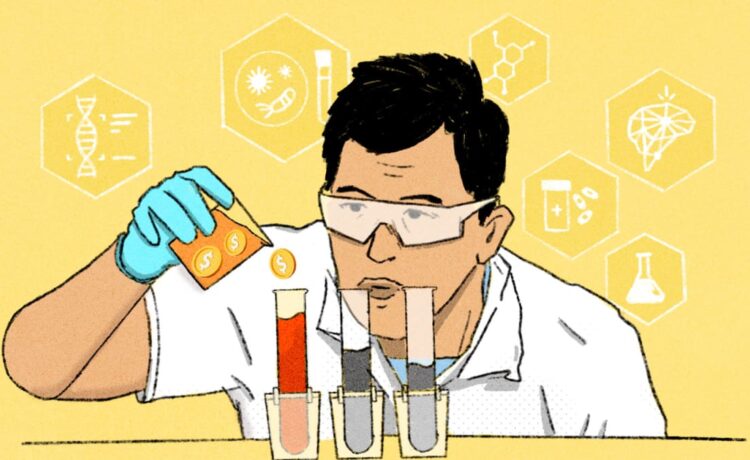THE NEXT CHALLENGE TO OVERCOME
Experts that CNA TODAY spoke to noted that Singapore needs more late-stage clinical development of drugs, as well as to cultivate its business networks in order to mature as a biomedical hub, enabling the sector to play a bigger role in the economy.
As a contributor to Singapore’s gross development product (GDP) growth, the biomedical cluster is still relatively modest compared to finance, technology and trade, noted Ms Selena Ling, chief economist at OCBC Bank.
“The sector is also concentrated by a few global players. And while the research infrastructure and ecosystem could be first-world, commercialisation could still be improved. The constraints may be a small domestic market and long timelines,” she said.
She suggested that there could be greater support for regional export strategies and regulatory harmony to open up new markets.
This is on top of deeper public-private partnerships to accelerate product translation and more targeted incentives to scale up manufacturing and conduct more late-stage clinical trials, she added.
Dr Heathers agreed, saying that as a small island, Singapore needs to be more “outward-looking” and partner with venture capital firms overseas.
“I think the challenge is to really reach out to overseas investors, overseas companies, overseas markets, to sort of leverage the technology base that we have in Singapore.”
When he first came here in 2000, he noticed the country’s inexperience in the biotech business model. Singapore was not used to growing an industry driven by innovation and relying on intellectual properties back then, he said.
For many years, Dr Heathers, added, Singapore had a hot real estate market that dominated investor interest and funds – waiting for a decade to develop a drug that would generate investment returns did not seem as attractive in comparison.
What ended up happening was that early startups propelled by government funding mostly focused on scientific research, then faded away, he said.
Prof Chng agreed, saying that in comparison with other successful biomedical hubs in the world, Singapore has a lower concentration of innovation and investors, and that investors here seem to have a lower risk appetite than elsewhere.
“We therefore need to have the stamina to persist if we want to see real made-in-Singapore successes, especially in the space of drug development,” he added.
22Health Venture’s Mr Scibetta raised the example of a country that Singapore could do well to learn from – Israel, which is now considered a startup nation.
He said that Israel started in a similar position to Singapore, being a small nation with a highly educated workforce and leading academic institutions. For a time, it also struggled with growing successful startups.
“The inflection point was when they created a government programme in 1993 called Yozma, which induced venture capital businesses to base themselves in Israel.
The programme transformed the country’s landscape of private equity investments, establishing 10 funds and pouring money into startups. This became the start of a professionally managed venture capital market there.
“Look at what happened with their investment by venture capital into startups, which correlates with their successful startups in Israel. I am advocating that Singapore do something similar,” said Mr Scibetta.
Today, Yozma’s funds form the foundations of the Israeli venture capital market, and Israel has been dubbed “The Startup Nation”.
Mr Yeo said in his IPS lecture that Singapore’s scientists themselves need to become more business-savvy too.
“One of the challenges is how to get our scientists to be more entrepreneurial. As scientists, they are passionate about research discovery. But how do you bring it to the market? You also need to encourage them to think business-wise.”
He suggested that Singapore could learn from the University of California San Diego, where doctors and scientists do a part-time Executive Masters of Business Administration (MBA) for 21 months at the Rady School of Management.
“Maybe we have to think along this way, maybe NUS and NTU have to think of how to reeducate our scientists. A bachelor’s of business administration is useless. I’d rather have a guy with an MBA who is also a doctor or scientist,” he said.
Indeed, Dr Heathers observed that, in his experience, when a biomedical startup receives funding, 80 to 90 per cent of the money goes towards research, while the remainder goes into the business development side.
“It’s a big R, small D sort of thing. I think that’s because most people in the ecosystem, local investors and government people who are tasked with developing a biotech industry, don’t quite understand that you need a 50-50 balance, like in the US, which is the leading country for this,” he said.
This gap manifests in the form of startups starting off with great research, demonstrating potential, but then “literally freezing” because they do not have any business or product development funding, so everything stops there, he said.
That is why Singapore needs more venture capital businesses who can mentor startups on the business side of things and think about commercialisation, sometimes even before the company exists, emphasised Mr Scibetta.
He added: “Singapore needs globally sophisticated venture capital that is based here, that started in this market. When the markets go down, they protect the Singapore startups, not recoil back to Boston or whatever overseas market, stop investing in your company and cause it to go bankrupt.”
An example of a fiasco was when one of Singapore’s most promising biotech companies, Tessa Therapeutics, abruptly dissolved in 2023 after a market downturn hampered efforts to secure more funding and find a buyer.
The company, which was developing treatment for cancer cells, raised more than S$200 million in funding and was primarily supported by US-based healthcare investor Polaris Partners before it shuttered.
HOW TO CARVE A NICHE
As Singapore looks ahead to the next phase of its biomedical sector development, it would also do well to focus on emerging areas where it could carve out a niche, experts said.
Singapore is already responding to global healthcare shifts by investing in data-driven research, Mr Yeo noted in his IPS lecture.
For instance, the National Precision Medicine Programme aims to capture the complete genome of 450,000 Singaporeans of different ethnic groups. This would be used to gain deep insights for future proactive and preventive treatment of patients.
Mr Yeo added that Singapore could share its data with neighbouring ASEAN countries such as Indonesia and Vietnam and collaborate with them, or even consider doing clinical trials in those countries.
This might also attract their scientists to come to Singapore to work, acting as a bridge to these nations.
Singapore should also do more to foster collaborations between smaller local companies that discover and develop compound drugs and big international pharmaceuticals that can then run clinical trials, manufacture and distribute these drugs at scale, Mr Yeo said.
Several biomedical institutions in Singapore are also investing in new modalities such as nucleic acid therapeutics and cell therapies, he noted, which could possibly emerge as niche areas for Singapore.
Prof Chng from NUS added that Singapore will continue to be strong in biomanufacturing –producing medicine developed by multinational companies such as Novartis and Sanofi that have operations here.
But at the same time, he said, the country should consider developing new frontiers in the industry.
“With our scale and size, we must always be looking at what we can uniquely contribute and what our competitive advantage is. In a way, I feel it is better for us to lead from the front than try to overtake from behind,” he said.
For example, he said that Singapore should develop a cutting-edge approach for the regulatory approval of products, especially in cell and gene therapies created here.
This is so that Singapore does not always have to follow regulatory frameworks or conduct trials in the US and Europe, enabling it to become “a leader, rather than a follower”.
All in all, these efforts culminate in creating products and medicine that make people’s lives better.
Prof Chng said: “As a clinician, what I really hope is that our biomedical sciences industry will eventually produce outcomes that will have real impact on the practice of medicine, patients and humanity. The short-term output of publications, patents and start-ups are great but it is the impact on the patients and health of the population that should be our purpose.”
Novartis’ Singapore country president Poh Hwee Tee agreed, saying that she finds her work purposeful, as she is part of the process of creating medicine that helps not just patients but their families too.
Her own mother was diagnosed with rectal cancer in 2017 and she went through the journey of being a caregiver, until her mother went into remission. She is grateful that her mother is still alive, thanks to scientific advancements.




